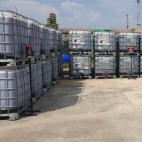South Africa’s mining industry has long been one of the economy’s most visible drivers but more recently regulatory uncertainty, labour strife, the lack of a social compact between the government, labour and business, an accelerated global downturn in commodity prices and a move towards increased local beneficiation, have created a difficult operating environment for mining companies. This, in turn, has led to substantially sub-optimal levels of investment in the sector than anticipated.
It is against this backdrop that the time-bound compliance targets stipulated in the Mining Charter of 2004 and its successor, the 2010 Mining Charter and the key instruments used to drive socio-economic change and transformation in the South African mining industry, have expired. In addition, the outcome of the second major Mining Charter audit by the Department of Mineral Resources (DMR), released in May 2015, is not without controversy and this audit will probably be the catalyst for the third iteration of the Mining Charter.
Given these challenges and the need for a collaborative approach towards finding pragmatic solutions, Webber Wentzel hosted a series of seven lunch time sessions between August and November 2015, focusing on the development of Mining Charter III. The sessions were attended by various stakeholders in the mining industry and took the form of round-table discussions facilitated by members of the Webber Wentzel Mining Sector Group and where appropriate, an industry expert.
The Sessions created a forum for key players in the mining industry to discuss and identify critical issues to be addressed in the preparation of Mining Charter III, with a view to positive engagement with the African National Congress’ (ANC) Economic Transformation Committee (ETC) and the DMR in order to maximise opportunities for investors, create regulatory certainty and drive growth and transformation of the mining industry.
In our view, the development of Mining Charter III presents a unique opportunity to bridge the trust deficit between government and the mining industry as well as introduce a long-term, clear and sustainable plan for the South African mining industry and downstream industries.
Following is a synopsis of the findings, highlighting key principles that cross sections of industry stakeholders believe the third iteration of the Mining Charter will need to address. We have categorised these findings into six critical themes:
· Creation of policy cohesion between government departments at national, provincial and local levels - there is an urgent need to create policy cohesion and coordinated implantation plans among governments which have jurisdiction between different aspects of the mining industry (e.g. the Code of Good Practice published and administered by the Department of Trade and Industry ("dti") and the Mining Charter);
· Progressive long & short term planning - South Africa must take account of immediate, medium and long term needs taking into account the cyclical and global nature of the mining industry;
· Creating regulatory certainty - the nature and the slow passage of the proposed amendments to the Mineral and Petroleum Resources Development Act, 2002 under the Mineral and Petroleum Resources Development Bill, 2013 has exacerbated the troubles in the mining industry and has created few opportunities for junior opportunities for junior miners;
· Restoration of Trust among industry stakeholders - various stakeholders have highlighted the trust deficit among government, labour and business. The lack of trust is historical but has worsened in recent times.
· Move international best practice - South Africa must release the globalisation of the extractive industry and structure the industry to meet the demand of the globalised industry and develop policy in accordance with "international best practice".
These themes permeate the elements of the Mining Charter set out below:
Ownership and Black Economic Empowerment
· Mining Charter III will need to address the issue of coherence between the Mining Charter and other legislation and policies that are related to black economic empowerment (BEE); specifically the dti's generic codes on BEE.
· Mining Charter III should therefore underpin cooperation between mining companies and local, provincial and national government, through the National Development Plan particularly in regard to Social and Labour Plans (SLPs) need to be addressed.
· Mining Charter III must adopt a tripartite approach between the industry, government and labour, implementing clear channels of communication with the Association of Mineworkers and Construction Union (AMCU).
· Transformation and socio-economic goals must be specified in individual mining rights, ensuring that the transformation and socio-economic requirements are clear and justiciable.
· The vague and ambiguous way in which the 2004 and 2010 Mining Charters articulate certain requirement allows the DMR to interpret rules arbitrarily. This uncertainty is a major drawback for multi-national companies considering investment in South Africa and needs to be addressed.
HDSA Ownership Requirements and the Potential Role of the State-Owned Mining Company
· There is a trust deficit between Government and industry that needs to be addressed. It requires a platform for constructive conversations and problem-solving with an overarching goal of empowerment in the form of real socio-economic transformation in SA.
· The creation of multiple empowerment Special Purpose Vehicles ("SPV’s") - an unintended consequence of BEE – has been counter-productive and serves as a hurdle to the creation of full-fledged black owned and operated mining companies.
· Mining Charter III also needs to clarify the concept of ‘meaningful economic participation’ as an ownership requirement that was introduced in the 2010 Mining Charter.
Labour Relations
· Any future discussions on Mining Charter III need to take stock of the realities of the volatile industrial relations climate. The current rivalry between AMCU and National Union of Mine Workers (NUM) also intensify the situation.
· On 25 August 2015, a framework that was signed by business, government, NUM, UASA and Solidarity came into agreement, addressing the issues of job losses, the procedures surrounding retrenchments and creating support and alternative employment opportunities. It is noted that AMCU was not a signatory to the framework.
· Mining Charter III needs to address the ability of mining companies to shed jobs in the current economic crisis. The industry cannot afford higher wages and the direct impact will be retrenchments if it is forced to pay them.
· The time is now to have meaningful interaction between all role players to agree on an industrial relations framework for the industry to ensure its viability and influence any Mining Charter III discussions.
Procurement and Enterprise Development
· Plan for better measurement of equity by looking at the contributions to skill development, supplier development and infrastructure development that firms who supply the mines are making. Also consider the deep multiplier effect on the overall economy.
· The aim of Mining Charter III should be to encourage the creation of an empowered, sustainable supply and manufacturing chain, which is not best achieved by a single focus on equity ownership.
· Mining Charter III needs to bring an end to policy incoherence and to a system of equity ownership rules that has largely benefited a few wealthy individuals with little trickle-down effect to the masses.
· Presently the onus is on the mining companies to ensure that their suppliers and their suppliers’ suppliers are BEE compliant, which is a time-consuming and costly process. Mining Charter III needs to find a simpler solution.
Housing and Living Conditions
· The obligations of mining companies in respect of housing are governed by four individual policy documents: Mining Charter; Housing and Living Standards (HLS); SLP guidelines and codes of good practice for the minerals industry. Mining Charter III will need to address consistency across these policies.
· Community development and integrated development plans are referenced in the Mining Charters, but Charter III needs to specify compliance targets and timelines to make it more sustainable.
· Any new Charter will need to provide guidance on how mining companies, local government and communities (and all relevant stakeholders) could come together in promoting community development.
Beneficiation
· Mineral beneficiation has been vaguely dealt with in the 2004 and 2010 Mining Charters. The Mineral and Petroleum Resources Development Act 28 of 2002 (MPRDA) Amendment Bill however substantially amends the MPRDA beneficiation provisions, which needs to be clarified.
· Mineral beneficiation also needs to be economically viable.
· There seems to be inconsistencies between the DTI’s and DMR’s approach to beneficiation. It boils down to who should regulate the process, bearing in mind that the DMR does not have the regulatory power to drive investment in downstream industries through incentives schemes, which is driven by the DTI. This would need to be clarified in Mining Charter III.
Conclusion
It is our hope that the information gathered and consensus reached among key role-players translates into cohesive principles which will facilitate a clearly-drafted Charter to achieve both the transformation objectives of the MPRDA, as well as growth and economic development for the benefit of our country and all its people.
Jonathan Veeran, partner and member of Webber Wentzel's Mining Sector Group






